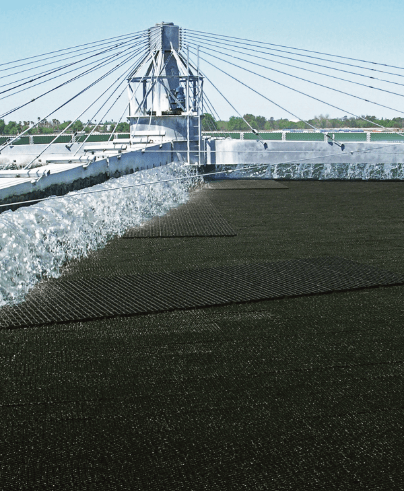Winter Maintenance Practices For Trickling Filters

As winter approaches and cold weather sets in, both the air and wastewater temperatures of your trickling filter can drop to the single digit area, so we want to bundle it up to prevent it from catching a “cold.” It is critical to preserve heat within the filter so the bugs are happy, healthy, and keep working hard to clean up the wastewater that humans produce. Here are a few measures you can take to keep the bugs happy and your trickling filter efficient:
- Shut off some or all of the air ports at the bottom of the filter to prevent cold air from getting inside.
- Reduce the amount of recycled water back to the filter because the temperature of the recycled water is normally 1-2˚C lower than the influent water.
- For filters that do not have a dome, extend the filter wall height so the wall can break the harsh wind from directly impacting the filter media.
By utilizing these tips, your trickling filter should keep performing to achieve the desired effluent limits. Although, at times, it is going to be inevitable to find ice forming on the distributor arm and even on the media. The operators may need to remove the ice and perform necessary maintenance both inside and on the outside of the trickling filter. Walking directly on the media to do this is normally not the best approach because the media can get damaged, especially in cold weather when it becomes more brittle, and the modules are not designed to withstand frequent foot traffic. In this case, a layer of protective grid is recommended to be installed on top of the filter media to protect it from foot traffic and icing damage. Additionally, the grid panels can protect the media from UV and hydraulic impact.